 W
WThe Amalfi Coast is a stretch of coastline in Tyrrhenian Sea, located between the Gulf Of Naples and the Gulf Of Salerno in the Southern Italy.
 W
WAmalfi is a town and comune in the province of Salerno, in the region of Campania, Italy, on the Gulf of Salerno. It lies at the mouth of a deep ravine, at the foot of Monte Cerreto, surrounded by dramatic cliffs and coastal scenery. The town of Amalfi was the capital of the maritime republic known as the Duchy of Amalfi, an important trading power in the Mediterranean between 839 and around 1200.
 W
WAmalfi Cathedral is a medieval Roman Catholic cathedral in the Piazza del Duomo, Amalfi, Italy. It is dedicated to the Apostle Saint Andrew whose relics are kept here. Formerly the archiepiscopal seat of the Diocese of Amalfi, it has been since 1986 that of the Diocese of Amalfi-Cava de' Tirreni.
 W
WThe Amalfi Drive is the conventional name of a section of road which runs along the stretch of the Amalfi Coast between the southern Italian towns of Sorrento and Amalfi. The road was originally built by the Romans. The drive between Salerno, at the southern base of the peninsula, and Positano follows the coast for about 80 km (50 mi).
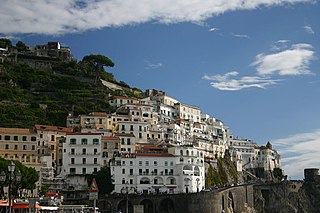 W
WThe Amalfian Laws are a code of maritime laws compiled in the 12th century in Amalfi, a town in Italy.
 W
WAtrani is a city and comune on the Amalfi Coast in the province of Salerno in the Campania region of south-western Italy. It is located to the east of Amalfi, several minutes drive down the coast.
 W
WAtrani, Coast of Amalfi is a lithograph print by the Dutch artist M. C. Escher, first printed in August 1931. Atrani is a small town and commune on the Amalfi Coast in the province of Salerno in the Campania region of south-western Italy. Atrani is the second smallest town in Italy and was built right at the edge of the sea. This image of Atrani recurs several times in Escher's work, most notably in his series of Metamorphosis prints: Metamorphosis I, II and III.
 W
WCetara is a town and comune in the province of Salerno in the Campania region of south-western Italy. It is located in the territory of the Amalfi Coast.
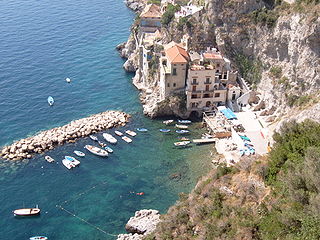 W
WConca dei Marini is a town and comune in the province of Salerno in the Campania region of south-western Italy. It is situated on a hill close to the coast and between Amalfi and Furore.
 W
WThe Duchess of Malfi is a Jacobean revenge tragedy written by English dramatist John Webster in 1612–1613. It was first performed privately at the Blackfriars Theatre, then later to a larger audience at The Globe, in 1613–1614.
 W
WThe Duchy of Amalfi or the Republic of Amalfi was a de facto independent state centered on the Southern Italian city of Amalfi during the 10th and 11th centuries. The city and its territory were originally part of the larger ducatus Neapolitanus, governed by a patrician, but it extracted itself from Byzantine vassalage and first elected a duke in 958. During the 10th and 11th centuries Amalfi was estimated to have a population of 50,000–70,000 people. It rose to become an economic powerhouse, a commercial center whose merchants dominated Mediterranean and Italian trade in IX and X century, before being surpassed and superseded by the other maritime republics of the North, like Pisa, Venice, and Genoa. In 1073, Amalfi lost its independence, falling to Norman invasion and subsequently to Pisa in 1137.
 W
WErchie is an Italian village and hamlet (frazione) of the municipality of Maiori in the Province of Salerno, Campania. It is part of the Amalfi Coast and its population is 83.
 W
WFurore is a town and comune in the province of Salerno in the Campania region of south-western Italy. Furore is located on the Amalfi Coast.
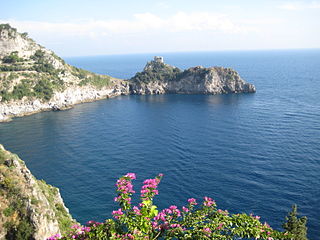 W
WThe Grotta dello Smeraldo is a cave, partly inundated by the sea and located in Conca dei Marini, Italy, on the Amalfi Coast.
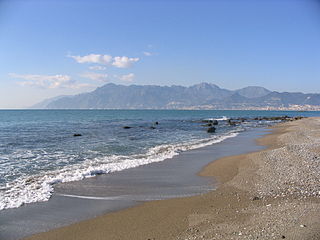 W
WThe Monti Lattari are a mountain range in Campania, southern Italy, which constitutes the backbone of the Sorrentine peninsula and of the Amalfi Coast.
 W
WMaiori is a town and comune on the Amalfi coast in the province of Salerno. It has been a popular tourist resort since Roman times, with the longest unbroken stretch of beach on the Amalfi coastline.
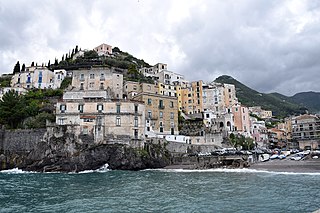 W
WMinori is a town and a comune in the province of Salerno, in the Campania region of south-western Italy. In 1997, as a part of the Amalfi Coast, it was declared a World Heritage site by UNESCO.
 W
WPositano is a village and comune on the Amalfi Coast, in Campania, Italy, mainly in an enclave in the hills leading down to the coast.
 W
WPraiano is a town and comune of the province of Salerno in the Campania region of southwest Italy. It is situated on the Amalfi Coast, a prime tourist location for the region and Italy alike, between the towns of Amalfi and Positano.
 W
WThe Church of San Giovanni Battista is a church located in the center of Praiano, a small comune located on the Amalfi Coast in southern Italy. Constructed in the Romanesque style, San Giovanni Battista has a rectangular plan and a vaulted ceiling, featuring Italian Baroque design elements on the inside. Dating back to the 11th–12th centuries, the church features a very well preserved maiolica flora- and fauna-inspired tiled floor and a pipe organ from Neapolitan organ masters.
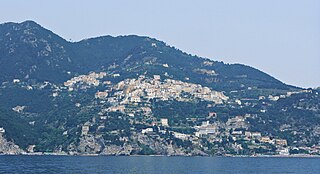 W
WRaito is an Italian village and hamlet (frazione) of the municipality of Vietri sul Mare in the Province of Salerno, Campania. It is part of the Amalfi Coast and its population is 996.
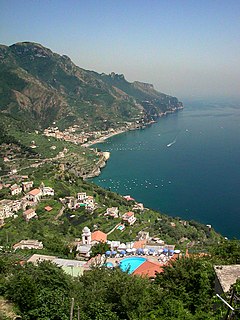 W
WRavello is a town and comune situated above the Amalfi Coast in the province of Salerno, Campania, Southern Italy, with approximately 2,500 inhabitants. Its scenic location makes it a popular tourist destination, and earned it a listing as a UNESCO World Heritage Site in 1997.
 W
WThe Archdiocese of Amalfi-Cava de' Tirreni is an archdiocese of the Latin Rite of the Catholic Church, with its episcopal see at Amalfi, not far from Naples. It was named Archdiocese of Amalfi until parts of the Diocese of Cava e Sarno were merged with it on September 30, 1986.
 W
WScala is a town and comune in the province of Salerno in the Campania region of south-western Italy. It is located on a rocky hill c. 400 m over the sea level and is part of the Amalfi Coast.
 W
WSet This House on Fire is a novel by William Styron, set in a small village of the Amalfi coast in Italy, centred on the themes of evil and redemption. The narrator, Peter Leverett, is a lawyer from the South, but the story is primarily told through the recollections of its protagonist, a troubled artist named Cass Kinsolving.
 W
WThe Sirenusas, also known as the Gallos, are an archipelago of little islands off the Amalfi Coast of Italy between Isle of Capri and 6 km (4 mi) southwest of Province of Salerno's Positano, to which it is administratively attached. They are part of the Campanian Archipelago. The name, Sirenuse, is a reference to the mythological sirens said to have lived there.
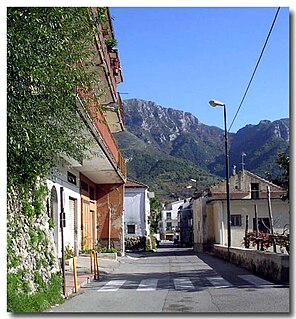 W
WTramonti is a town and comune in the province of Salerno in the Campania region of south-western Italy. It is located in the territory of the Amalfi Coast.
 W
WVietri sul Mare is a town and comune in the province of Salerno, in the Campania region of southern Italy. It is situated just west of Salerno, separated from the Port of Salerno by only a harbour wall. The town is known for its polychrome ceramics, a tradition since at least the 15th century, and is considered to be the gateway to the Amalfi Coast.
 W
WVilla Cimbrone is a historic building in Ravello, on the Amalfi Coast of southern Italy. Dating from at least the 11th century AD, it is famous for its scenic belvedere, the Terrazzo dell'lnfinito.
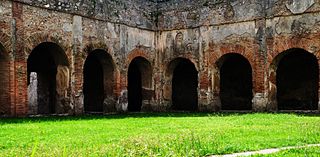 W
WThe Villa Romana or Roman Villa is an archaeological ruin from the 1st century in the Italian village of Minori, in Campania.
 W
WVilla Rufolo is a building within the historic center of Ravello, a town in the province of Salerno, southern Italy, which overlooks the front of the cathedral square. The initial layout dates from the 13th century, with extensive remodeling in the 19th century.